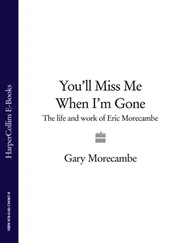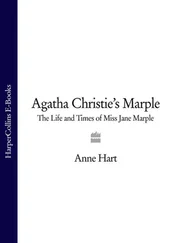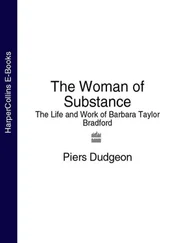Another sign of her intentions was her decision to appoint Robert Dudley, a radical Protestant and son of the disgraced Earl of Northumberland, as chief organiser of her coronation. Dudley enthusiastically accepted the role, and decided he needed the help of a scholar to set the date, someone who could draw on the most ancient and respected astrological and historical authorities to determine the best day. His appointment was a surprising one. He did not choose from among the ranks of persecuted exiles tentatively returning to the country. Instead he selected a man who, at least according to Foxe, reeked of the smoke from Bonner’s bonfires: John Dee.
Choosing the date of the coronation was far from a matter of scheduling. It was a highly sensitive decision. Her reign was by no means regarded with the unbridled enthusiasm that, following the triumph of the Armada, later Protestant chroniclers would retrospectively assume. England had just endured two troubled experiments in monarchy with Edward, the first sovereign anointed by a Protestant church, and Mary, the first Queen regnant. 2 The idea of a third that combined both apparently disastrous innovations aroused deep apprehension.
As daughter of Anne Boleyn and offspring of Henry’s assault on the unity of the Church, Elizabeth’s inheritance of the divine right of sovereignty represented a challenge to the political, even cosmic order. Her half-sister Mary had found the idea of Elizabeth being Henry’s child literally inconceivable and assumed her father must have really been Boleyn’s lute player, Mark Smeaton. Making Elizabeth queen meant that England would be committed to a course of Protestant reformation from which it would be very hard to return.
Elizabeth’s sex amplified the uncertainty. The combination of femininity with majesty was still regarded as highly combustible. Mary had been the first English queen to rule her subjects, rather than act as a king’s consort. Some speculated that it was her gender as much as religion that had made her reign such a difficult one. John Knox issued his famous First Blast of the Trumpet against the Monstrous Raiment of Women in 1558, the final year of Mary’s reign. For him the idea of female government was so outrageous it demanded a new term – ‘monstriferous’. John Calvin, the Protestant theologian, wrote to William Cecil that Elizabeth’s coronation ‘was a deviation from the primitive and established order of nature, it ought to be held as a judgement on man for his dereliction of his rights.’ The prognostications of the French prophet Nostradamus for 1559, the first full year of Elizabeth’s reign, seemed to confirm this view. Translated into English, they were widely read, foretelling ‘divers calamities, weepings and mournings’ and ‘civil sedition’ that would make the ‘lowest’ rise up against the ‘highest’. 3
Thus, the selection of the date that inaugurated this experiment was crucial. It needed to muster all the favourable auspices that ancient authorities could offer, and show that God would bless such an ordination.
O, when degree is shak’d
Which is the ladder of all high designs
The enterprise is sick!
…observed Ulysses in Shakespeare’s Troilus and Cressida.
Take but degree away, untune that string,
And hark what discord follows! 4
Nostradamus had foretold such discord and Dee’s selection of the coronation day had to prevent it.
Dee was well qualified for the role. His Propaedeumata had established him as one of the country’s leading natural philosophers and revived interest in mathematically-based astrology (as opposed to the divination practised by Nostradamus). His frantic bibliographic activity during Mary’s reign had also armed him with a formidable array of ancient texts from which to cite precedents and authorities.
But this was not enough to erase the stigma of his association with Bonner, which, thanks to Foxe and others was already widely suspected, if not known. There must have been some other redeeming quality.
A clue lies in the treatment Dee received in Foxe’s account of Bonner’s persecutions. In the first edition of Acts and Monuments, which was being completed in Basle around this time, Dee’s involvement with Bonner is fully documented. However, by the 1576 edition, he has completely disappeared. His words are still there but every occurrence of his name (more than ten) has been deleted, or substituted with the anonymous ‘a Doctor’.
This erasure is almost unique in a work otherwise notable for naming names. For example, in one of Philpot’s interrogations, Dee is joined by another Doctor, one Chedsey, whom Foxe did not allow the same anonymity, not even when they appeared in the same sentence. 5 Perhaps Foxe removed Dee’s name because he was threatened with legal action, or pressurised by the court. But this seems unlikely. Acts and Monuments rapidly became one of the most revered texts of the Elizabethan age; the Queen commanded a copy to be lodged in every cathedral library in the country. Far more probable is that Foxe learned more about Dee’s activities in Bonner’s household and this meant that the portrayal of him in Acts and Monuments as a Catholic colluder was unfair.
In a deposition made to a delegation of Queen’s commissioners in 1582, Dee states that his arrest and handover to Bonner resulted from him being engaged upon ‘some travails for her Majesty’s behalf.’ He had undertaken these unspecified travails ‘to the comfort of her Majesty’s favourers then, and some of her principal servants, at Woodstock’, Woodstock being the palace where Elizabeth was held under arrest. These ‘favourers’ undoubtedly included Robert Dudley. They also included John Ashley, who had since become Master of the Queen’s Jewel House. Dudley was dead by the time Dee came to be interviewed, but Ashley was still alive, and Dee invited the Queen’s commissioners to go and ask him about the Bonner years should they disbelieve his claims.
Of course, these ‘travails’ may have been an invention. But, as Dee well knew, his testimonial to the commissioners would be read by Elizabeth, who was obviously in a position to confirm whether or not, at least in this respect, it was true.
It seems reasonable to assume that Dee’s presence in Bonner’s household was known, perhaps even encouraged by Elizabeth and her supporters. This would explain why, having been deprived of the rectorship of Upton after his arrest in 1553, he was now awarded the living at Leadenham in Lincolnshire, which was presented to him by two members of the Stanley family, Sir William and Henry, Lord Strange. 6
Thus it was not as a shamed member of a failed regime that Dee emerged into the limelight in late 1558, but as the loyal ally of a glorious new one, as an ‘intelligencer’, in all the possible meanings of that peculiar Elizabethan term: a seeker of hidden knowledge, philosophical and scientific, as well as a spy.
The Christmas festivities of 1558-9 provided Catholic onlookers with disturbing portents of Elizabeth’s religious policies. ‘Your lordship will have heard of the farce performed in the presence of Her Majesty on Epiphany Day,’ wrote a concerned Spanish ambassador to his Duke, referring to a Twelfth Night masque. He had been appalled by the ‘mummery performed after supper, of crows in the habits of cardinals, of asses habited as bishops, and of wolves representing abbots’. ‘I will consign it to silence,’ he added. 7
In the midst of these revelries, Dee set about writing a long and detailed analysis of the astrological augurs for her reign. He chose 15 January 1559 as its start date. His reasons, along with the document setting them out, are lost, but no doubt he was swayed by Jupiter being in Aquarius, suggesting the emergence of such statesmanlike qualities as impartiality, independence and tolerance, and Mars in Scorpio providing the passion and commitment a ruler needed. 8 Such a day would mark the nativity of a great reign.
Читать дальше












